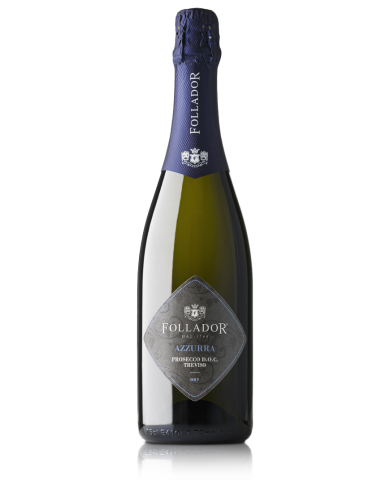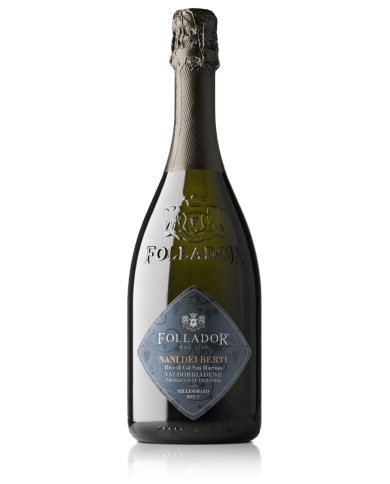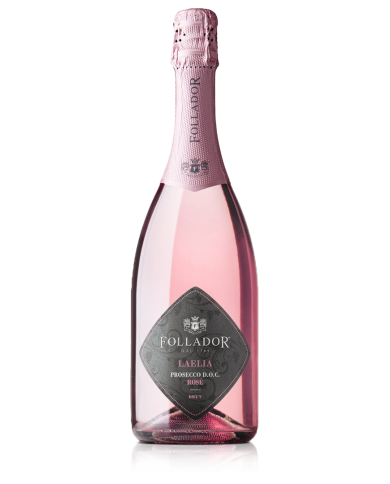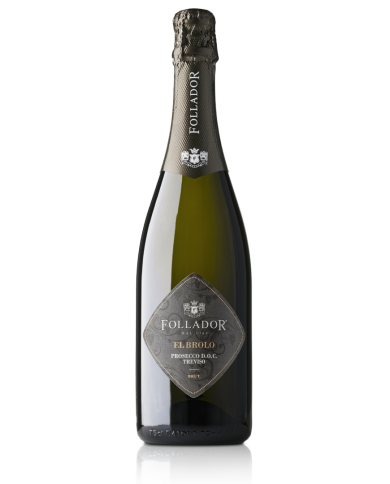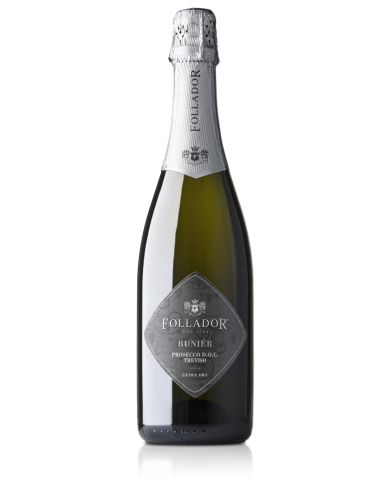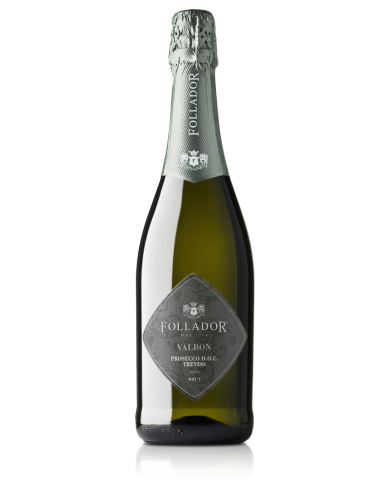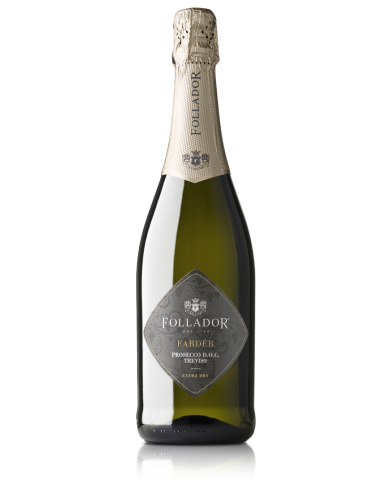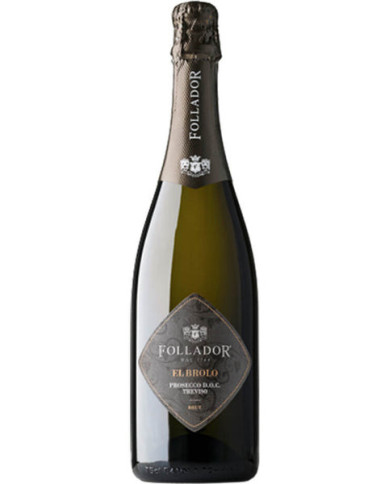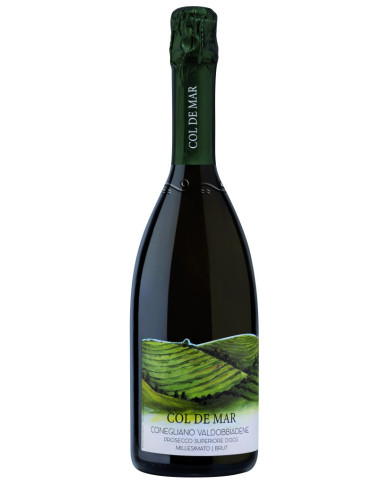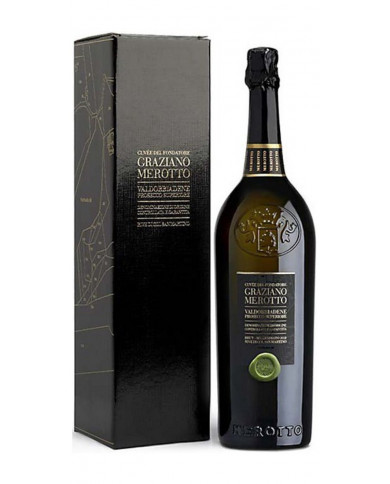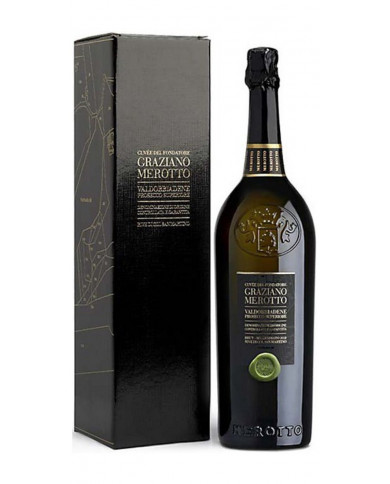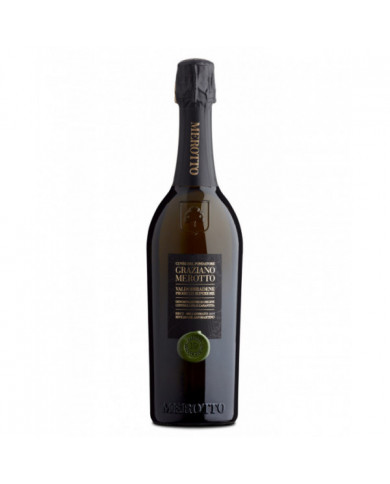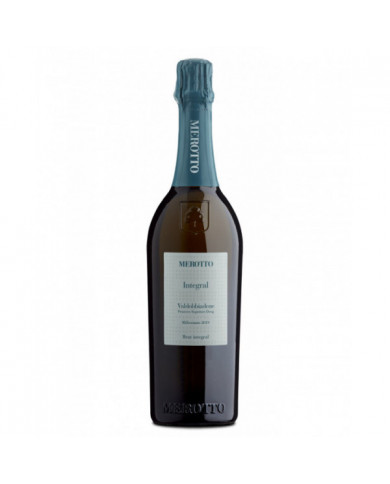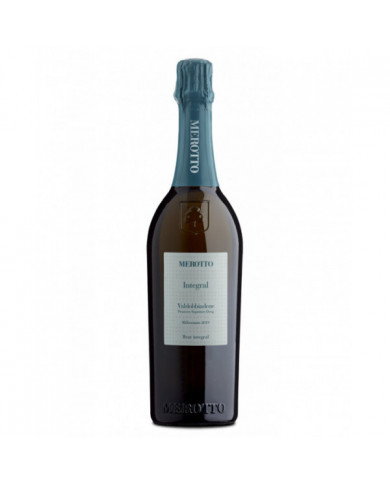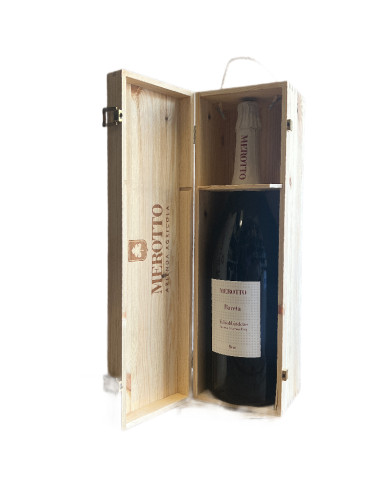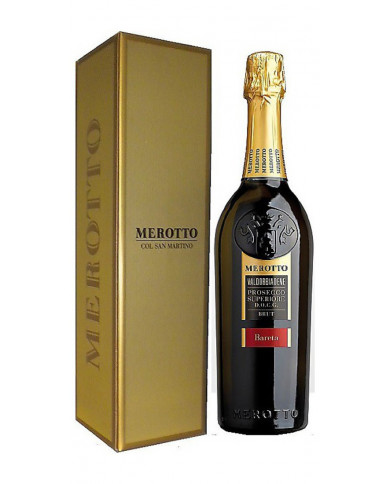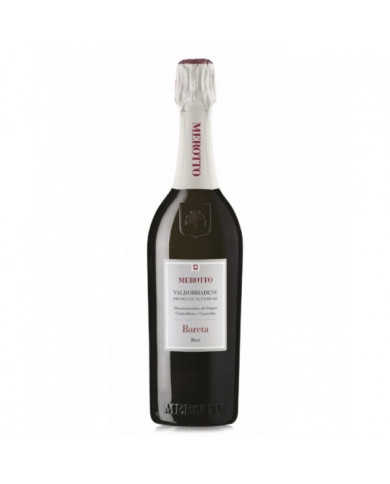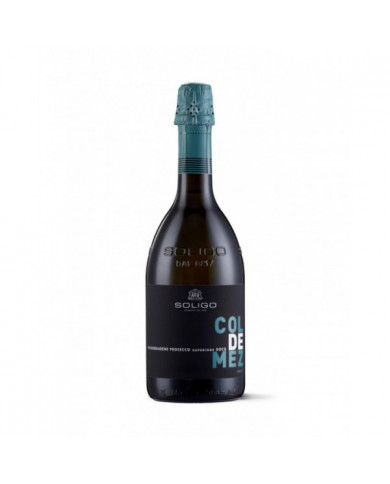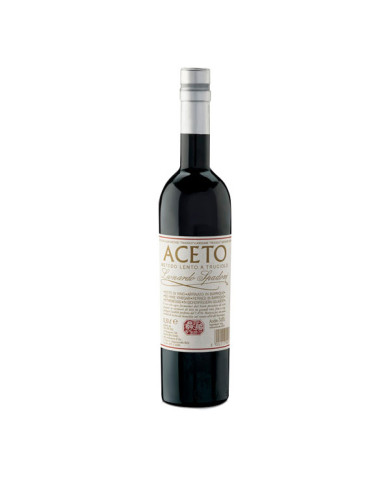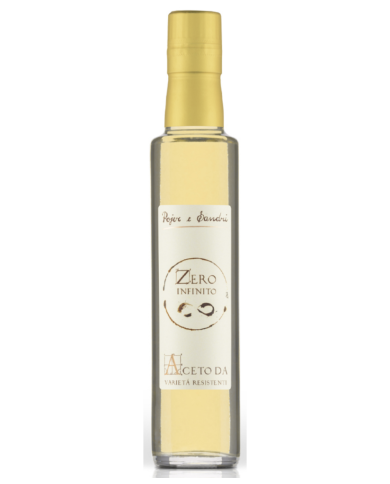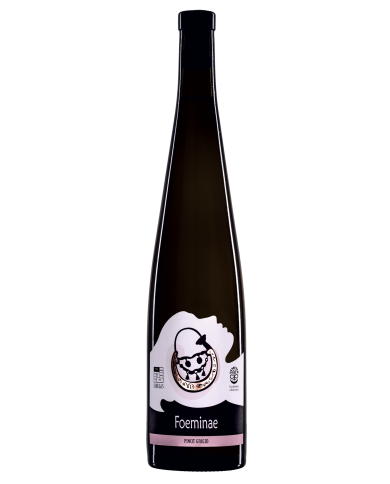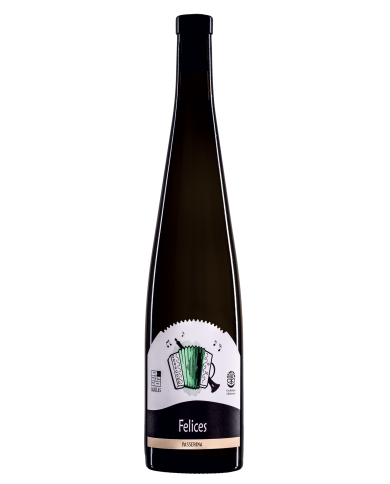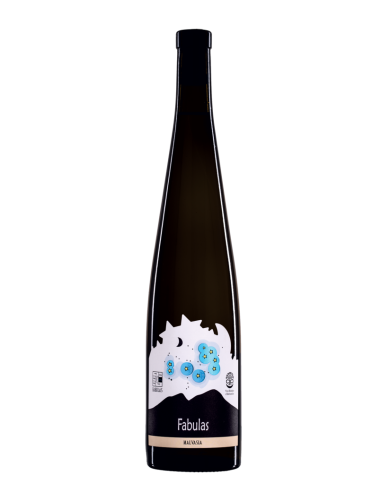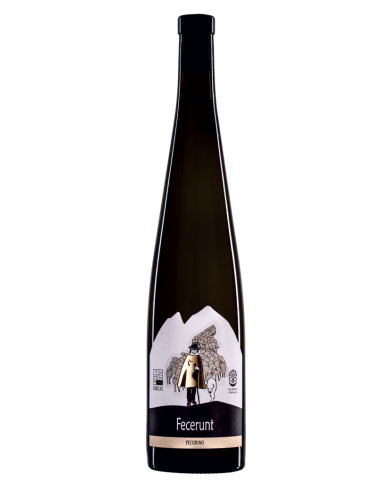NANI DEI BERTI - Banks of Col San Martino: A tribute to the energy and initiative of Giovanni Follador, father of Gianfranco, so nicknamed. Refined sparkling wine of noble quality, very fine perlage in a splendid combination of bouquet and flavours. An excellent Superiore with a pale straw yellow color, with typical greenish reflections. Lively and very fine perlage with an intense bouquet of citrus, almond and acacia flowers. Excellent balance of acidity and fragrance, well structured with a dry finish. Important wine, good aperitif. Its sapidity and balanced structure make it suitable for light first and second courses, excellent with tasty cheeses.
Delicious sparkling wine with a fresh and lively taste, a bright pale pink vintage with good structure and persistence, based on Glera grapes with a blend of 10% Pinot Noir. The base wines are obtained from cryomacerated grapes according to the Gianfranco Follador method ®, with fermentation in steel tanks at a controlled temperature. Pinot Noir is vinified in red as per the disciplinary. Second fermentation in autoclave, according to the Martinotti-Charmat method, with regular refermentation with at least two months of rest on the lees. Intense hint of fruit, in particular apple and white-fleshed peach, with pleasant notes of red fruits, blackberry, wild strawberries and currants. An excellent accompaniment to any aperitif, it is interesting to pair with cold cuts, cured meats in general and even aged cheeses.
Prosecco wine produced with glera grapes grown in the hilly areas of the denomination which extends for 15 municipalities between Conegliano and Valdobbiadene.
Citrus and floral notes, strong and savory taste. Between one sip and another, all the enchantment of the Col San Martino hills.
Valbobbiadene Prosecco Superiore DOCG Brut "Bareta" is a wine produced by the Merotto winery located in Col San Martino, in the Valdobbiadene area in Veneto. The grape that gives rise to this wine is 100% Glera. The second fermentation and fermentation take place in an autoclave for about 60 days with the Charmat method.
It recently arrived and has already received various awards, including the Gilbert & Gaillard 2021 Gold Medal. This DOC sparkling wine comes from the union of Glera and Pinot Noir grapes. Both have been grown for generations in our area. The harvest of the two varieties takes place at different times. The maturation of the Pinot Noir is reached at the end of August while the Glera is ready to be harvested after the second half of September. The grapes are therefore vinified separately. Only afterwards is the blend between the two base wines carried out and thanks to the activity of the selected yeasts does a slow refermentation take place in an autoclave (Martinotti method - Charmat sparkling process) during which the base wine becomes sparkling and is then left to mature on the lees for at least 60 days. The delicate soft pink color is given by the skins of Pinot Noir grapes rich in pigments called anthocyanins. The aromatic bouquet, on the other hand, arises from the union of the two varieties: the hints of small red fruits from the Pinot Noir and the descriptors of white-fleshed fruit such as pear and apple come from the Glera bunches. In this way we obtain a sparkling wine suitable for numerous occasions and in great demand all over the world. Perfect for a romantic dinner or a summer aperitif with friends.ŌĆŗŌĆŗŌĆŗŌĆŗŌĆŗŌĆŗ
Prosecco Designation: A Journey through History and Culture
What is Prosecco? Simply put: it's a sparkling wine of Italian origin, famous all over the world. But the Prosecco Designation tells a much broader story. It allows us to take a journey through history, culture, and the art of winemaking.
The History of Prosecco
The Origin of Prosecco
Prosecco has its roots in Northeastern Italy, and its name derives from the word "prosech", which in local dialect means "forest". The origin of this sparkling wine dates back to the XVI century.
The Evolution of Prosecco
Over the centuries, Prosecco has undergone a radical transformation, moving from a sweet and semi-dry wine to a dry and sparkling wine, loved all over the world.
The Types of Prosecco
Prosecco DOC
The Prosecco DOC, or Denomination of Controlled Origin, covers a vast area that extends between Veneto and Friuli Venezia Giulia.
Prosecco DOCG
The Prosecco DOCG, or Denomination of Controlled and Guaranteed Origin, represents the apex of Prosecco production, with unmatched quality and typicity.
Prosecco Superiore di Cartizze
The Prosecco Superiore di Cartizze is considered the crown jewel of Prosecco, produced only in a small area of the Prosecco region.
How Prosecco is Produced
The Winemaking Process
The production of Prosecco follows the Charmat or Martinotti method, a winemaking process that involves a second fermentation in autoclaves.
The Importance of Terroir
The terroir, or the soil, climate, and environment in which the vines grow, plays a fundamental role in the quality and character of Prosecco.
How to Taste Prosecco
How to Serve Prosecco
Prosecco is served cold, preferably in a sparkling wine glass, to fully appreciate its fruity and floral aromas.
Food Pairings with Prosecco
Thanks to its versatility, Prosecco pairs perfectly with a wide variety of foods, from appetizers to desserts.
Prosecco in the World
Prosecco in Italian Exports
Prosecco represents one of the most important Italian wine exports, loved both in Europe and in the United States.
The Influence of Prosecco on Culture
Prosecco has had a significant impact on culture, becoming a symbol of Italian living, synonymous with celebration and conviviality.
The Prosecco Designation is not just a quality brand, but it represents the passion, tradition, and art of Italian winemaking. Prosecco, with its unique and unmistakable taste, continues to conquer the world, toast after toast.
FAQ
Where does Prosecco come from?
Prosecco comes from Northeastern Italy, particularly from the regions of Veneto and Friuli Venezia Giulia.
What is the difference between Prosecco DOC and DOCG?
Prosecco DOCG is produced in specific and more restricted areas compared to Prosecco DOC, ensuring superior quality.
How is Prosecco served?
Prosecco is served cold, preferably in a sparkling wine glass.
What foods can Prosecco be paired with?
Prosecco pairs perfectly with a wide variety of foods, from appetizers to desserts.
Why is Prosecco so popular?
Prosecco is popular for its unique taste, its versatility, and because it represents a symbol of Italian living.

